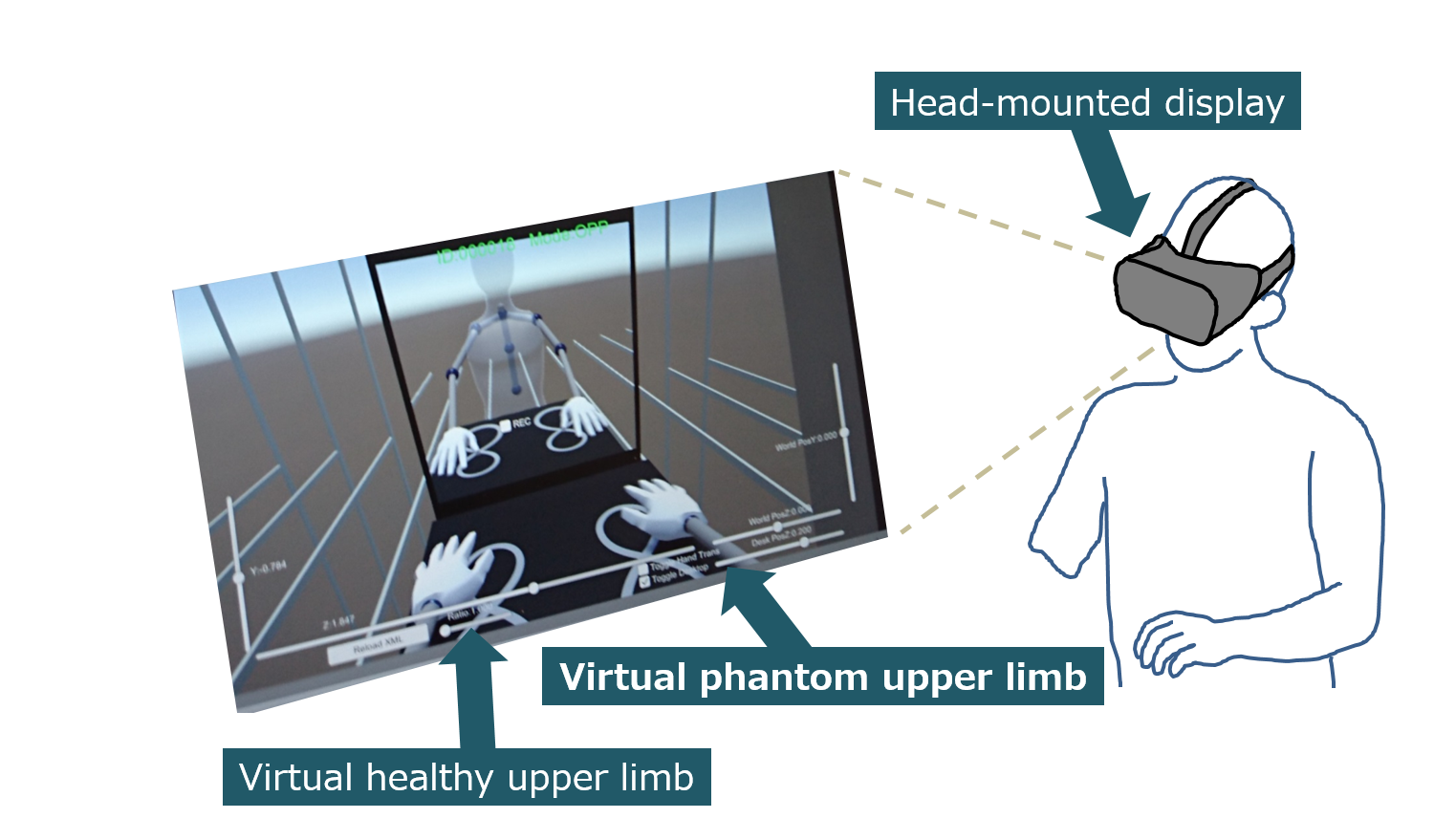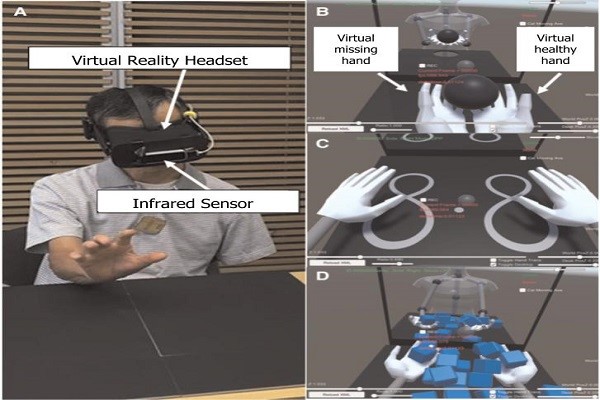What types of pain can virtual reality relieve? Small-scale study in arm amputees reveals what types of phantom limb pain are most effectively treated in virtual reality

Pain medicine experts have clarified which types of pain can be best treated by time in virtual reality for people who have had an arm amputated or paralyzed. Twenty minutes watching a virtual replacement arm perform simple tasks can reduce feelings of uncontrolled or unnatural movement, but sensations of shooting or burning nerve pain may be unchanged.
People with amputated limbs often feel pain in the limb that is no longer present, so-called phantom limb pain. Looking at a mirror image of the remaining limb to trick the mind into seeing the missing limb as relaxed and comfortable has been a long-standing pain relief technique. Modern computer graphics and virtual reality systems can enhance the sense of immersion by allowing a person to see the phantom limb not just stationary in front of a mirror, but moving and completing tasks, potentially offering even more pain relief.
Researchers at the University of Tokyo wanted to understand how visualizing the phantom limb affects different types of pain.
Phantom limb pain can be roughly divided into two types: pain associated with distorted limb movement and body representations, for example a tightly clenched fist that cannot open, and unusual nerve sensations, like shooting or burning pain.
The study included 19 participants between ages 37 and 59 years old, all of whom either had one amputated arm or one paralyzed arm. The paralysis was caused by an injury to the nerves that branch off from the spine to control the arms.
A computer tracked the participant’s remaining limb as it moved and automatically created a mirror image version of that limb. Participants saw their two virtual arms moving together in the virtual reality headset while completing different simple tasks, like carrying a virtual ball, in one 20-minute session.
Participants reported more pain relief for distorted limb movement and body representation symptoms than for nerve pain symptoms. Participants with paralysis also reported greater pain relief than participants with arm amputations.
“We were surprised by the effectiveness of the pain relief provided by virtual reality rehabilitation, and also by the fact that the level of pain relief varied due to characteristics of the phantom limb,” said Dr. Masahiko Sumitani, last author of the recent research publication.
Researchers hope that understanding what types of pain are best treated in virtual reality will lead to a future of tailor-made pain treatment strategies based on unique characteristics of each individual’s pain.
The research is a peer-reviewed study in humans published in Pain Medicine. Collaborators at KIDS Co. Ltd., Power Place Inc. and Kio University also contributed to this research.

The movement of the healthy arm was captured with an infrared motion sensor, and a 3D computer graphic figure of the healthy arm was projected into the virtual reality headset. When participants simultaneously moved both hands, they experienced the sensation of producing intentional movements of their phantom limb.
© 2019 Masahiko Sumitani.

A research participant wears a virtual reality headset while performing simple movement tasks (left). Tasks included carrying a single ball and then dropping it, tracing a figure eight and carrying as many blocks as possible (right).
© Originally published by Pain Medicine, DOI: 10.1093/pm/pny269
Papers
Osumi M, Inomata K, Inoue Y, Otake Y, Morioka S, Sumitani M, "Characteristics of Phantom Limb Pain Alleviated with Virtual Reality Rehabilitation," Pain Medicine: December 21, 2018, doi:10.1093/pm/pny269.
Link (Publication )
)
Related links
- Department of Pain and Palliative Medicine, The University of Tokyo Hospital (Japanese)

- KIDS Co., Ltd.

- Neurorehabilitation Research Center, Kio University (Japanese)






